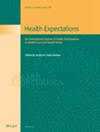Long-Term Benefits Following Hepatitis C Cure Through Facilitated Telemedicine; Experiences of People With Opioid use Disorder Five Years After Achieving a Sustained Virological Response
Abstract
Background
Facilitated telemedicine is highly effective for hepatitis C virus (HCV) treatment among people with opioid use disorder (OUD). However, the long-term impact of sustained virological response (SVR) through this model of treatment remains unexplored. We examined how people with OUD perceive SVR achieved through facilitated telemedicine.
Methods
We conducted two focus group discussions (FGDs) with nine participants at least 5 years post-SVR through a randomised controlled trial of facilitated telemedicine in opioid treatment programmes (OTPs) (New York State, 2018–2020). Eligibility required active OTP enrolment at the time of FGDs. We used a semi-structured interview guide and performed thematic analysis of FGD transcripts.
Results
Participants had a mean age of 52.6 years (SD = 13.7), 66.6% were male, and 88.8% identified as White. We identified three FGD themes, each corresponding to pre-, during and post-intervention phases (see Figure 1): (1) Attitudes towards HCV and barriers to treatment among people with OUD, (2) Embracing facilitated telemedicine for HCV care integrated into OTPs, and (3) Experiencing long-term benefits from facilitated telemedicine across all aspects of HCV care and overall well-being. Barriers included competing priorities, perceiving HCV treatment as a low priority, and insurance restrictions (Theme 1). Participants valued facilitated telemedicine for its convenience, empathetic clinicians, and one-stop shop approach (Theme 2). At least 5 years post-SVR, participants reported benefits in HCV knowledge, improved OUD recovery, and improvement in whole health (Theme 3).
Conclusion
At least 5 years post-SVR, people with OUD reported improvements in OUD recovery, overall well-being and sustained satisfaction with telemedicine-based HCV care. These findings highlight the lasting impact of both an SVR and care delivery through facilitated telemedicine.
Patient and Public Contribution
In this study of patient involvement, we conducted focus groups with patient-participants to examine the long-term impact of receiving HCV care through facilitated telemedicine integrated into OTPs. Participants had previously taken part in a randomised controlled trial of facilitated telemedicine (New York State, 2018–2020). At least 5 years after achieving an SVR, we sought participant feedback to evaluate the long-term impact and sustainability of facilitated telemedicine as an approach to achieve an HCV cure with the objective of informing future policy development. Participants had also contributed critical input at various stages of the original study's design and implementation. During the pilot phase, participants advocated for facilitated telemedicine in a testimonial video. Participants provided feedback on design and implementation by participating in planning and site initiation meetings. A Patient Advisory Committee ensured participant voices were integrated into the research process by representing their feedback on study conduct. Additionally, a Sustainability Committee supported public involvement by promoting educational opportunities, providing input on implementation, and addressing long-term sustainability considerations.


 求助内容:
求助内容: 应助结果提醒方式:
应助结果提醒方式:


